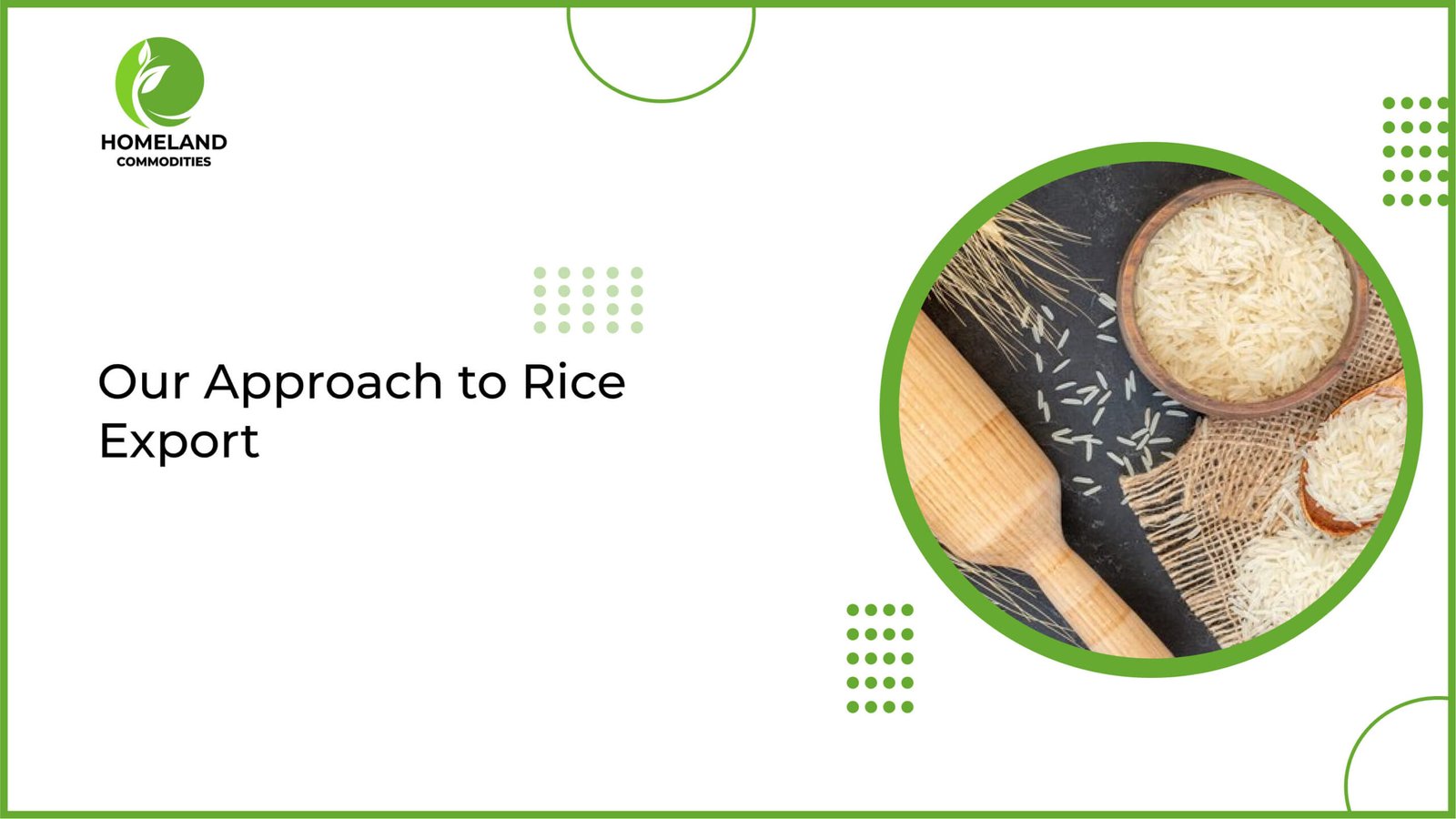Introduction
Rice serves as a fundamental dietary staple for more than half of the world’s population, highlighting its indispensable role as a key agricultural resource. As one of the primary producers of rice globally, our approach to exporting this essential crop is important not only for supporting our national economy but also for enhancing global food security. Our strategic framework is centered on ensuring high standards of quality, promoting sustainable agricultural methods, expanding into diverse international markets, and fostering continuous technological advancements.
Quality Assurance
Ensuring top-tier quality is central to our rice export strategy. We implement rigid quality control measures throughout the entire production cycle, spanning from seed selection and cultivation to harvesting, processing, and packaging. This meticulous approach guarantees that our rice consistently meets stringent international standards and fulfills the expectations of consumers worldwide.
Seed Selection and Cultivation: We meticulously choose high-quality, certified seeds that demonstrate robust resistance to pests and diseases. Employing advanced agricultural practices and efficient irrigation techniques ensures optimal crop health and productivity.
Harvesting and Processing: Utilizing state-of-the-art machinery and advanced post-harvest technologies minimizes losses and preserves the integrity of our rice. Our careful approach to drying, milling, and storage facilities safeguards against contamination and maintains product freshness.
Certification and Compliance: Every batch of our rice undergoes comprehensive testing and evaluation to achieve certifications such as ISO (International Organization for Standardization), HACCP (Hazard Analysis Critical Control Point), and organic labels. These certifications validate our adherence to stringent international safety and quality regulations, ensuring peace of mind for our consumers and partners alike.
Sustainable Practices
Sustainability is a core principle of our rice export strategy. We understand the critical need for environmentally friendly practices to protect natural resources and ensure the long-term viability of our rice industry.
Water Management: We utilize efficient water management techniques such as drip irrigation and alternate wetting and drying (AWD) to significantly reduce water wastage.
Soil Health: To maintain soil fertility and minimize environmental impact, we practice crop rotation, use organic fertilizers, and limit the application of chemical pesticides.
Energy Efficiency: By employing solar-powered machinery and energy-efficient processing plants, we effectively reduce our carbon footprint and promote environmental sustainability.
Market Diversification
To reduce risks and promote market stability, we implement a diversified market strategy. This strategy involves broadening our reach across various regions and catering to multiple market segments.
Target Markets: We focus on both traditional markets with established demand and emerging markets with significant growth potential. Key regions include Asia, the Middle East, Europe, and Africa.
Product Range: Our product portfolio encompasses a wide variety of rice types, including white rice, brown rice, basmati, jasmine, and specialty rice varieties, catering to diverse consumer preferences.
Value-Added Products: We also develop value-added products such as rice bran oil, rice flour, and ready-to-cook rice meals. This allows us to tap into niche markets and enhance our revenue streams.
Technological Innovation
Innovation is key to maintaining our competitive advantage in the global rice market. We invest significantly in research and development to boost productivity, enhance quality, and lower costs.
Precision Agriculture: Utilizing drones, satellite imagery, and IoT devices for real-time monitoring of crop health and soil conditions enables us to improve yields and reduce input costs.
Genetic Research: Through genetic research, we develop high-yield, stress-resistant rice varieties, ensuring stable production even under challenging conditions.
Smart Supply Chain: By implementing blockchain technology in our supply chain, we enhance transparency, traceability, and trust with our international buyers.
Partnerships and Collaborations
Strategic partnerships and collaborations are vital to our rice export strategy. We actively engage with a diverse range of stakeholders, including farmers, research institutions, government agencies, and international trade organizations.
Farmer Support Programs: We offer training and support programs to farmers, educating them on best practices and modern techniques to enhance productivity and quality.
Research Collaborations: Our joint research initiatives with universities and agricultural research centers drive innovation and promote sustainable practices.
Trade Agreements: Bilateral and multilateral trade agreements help us access new markets and gain competitive advantages through reduced tariffs and trade barriers.
Conclusion
Our approach to rice export strategy is comprehensive, focusing on quality, sustainability, market diversification, and innovation. By upholding stringent standards and incorporating advanced technologies, we strive to meet the increasing global demand for rice while ensuring the long-term sustainability of our industry. Through ongoing improvement and strategic partnerships, we are dedicated to delivering premium rice products to consumers worldwide.


